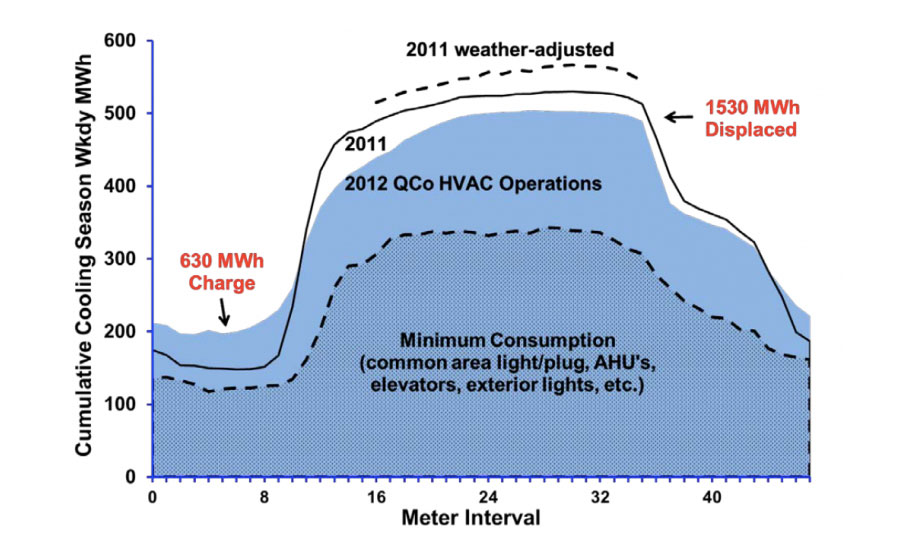The traditional, and still dominant, uses of energy modeling are all associated with building design. Architectural form and mass optimization. HVAC system selection and sizing. Code compliance. Leadership in Energy and Environmental Design (LEED) or Green Globes certification. But energy modeling has impactful post-occupancy uses as well, and some of these, like model predictive control (MPC) — the use of models to explore operational alternatives in response to actual conditions and to optimize operations in real time — are quickly making their way from the whiteboard and into the marketplace.
One of the companies at the forefront of this emerging industry is QCoefficient, a Chicago firm that specializes in implementing demand response services for large commercial buildings. QCoefficient’s process is simple in concept. The firm contracts with an owner or management company to control some or all of the HVAC in a building. It then uses the U.S. Department of Energy’s (DOE’s) EnergyPlus whole building energy simulation program to create an energy model of the building, calibrates it, and uses homegrown software to connect the model to the building’s energy management system and thermostats. Real-time information about local weather and building conditions keep the model true. The value proposition manifests during hot summer afternoons when electricity rates and demand charges peak due to spikes in air conditioning use.
Using local weather forecasts and price signals from the grid, QCoefficient uses EnergyPlus simulations to develop an optimal pre-cooling strategy for the building. Specifically, it lowers zone thermostat setpoints in advance of the peak and cools the building during cheaper off-peak hours. It then leverages the building’s thermal mass — its structural elements, its contents, and the water in its pipes and tanks — to absorb heat during peak hours.
One of QCoefficient’s most visible clients and success stories is Chicago’s Willis Tower. QCoefficient controls 13 of the tower’s 108 floors, comprising 20 percent of its occupied space. In the summer of 2012, QCoefficient displaced 1,500 megawatt hours (Mwh) of peak energy use while increasing off-peak use by 600 Mwh. The 900 Mwh reduction — a typical home consumes 10 Mwh hours annually — combined with the shift from peak to off-peak use avoided 900 tons of CO2 emissions. It also saved Willis Tower management approximately $250,000. These savings were achieved for three weeks of setup time and a setup fee of about $50,000 — a rate of return of 500 percent.
“Hot weekdays present a great economic opportunity for thermal energy storage,” said QCoefficient director of engineering, Sandro Plamp, “especially in grid-congested cities. They are the least efficient for cooling as outdoor heat and humidity challenge day-time chiller performance and greatly increase the cooling load associated with fresh air ventilation. They also experience the highest and most volatile electric prices. At this building, the incentives were magnified by participation in the Independent System Operators (ISO) economic and emergency demand response programs and by the very low, and sometimes negative, night-time prices that occur in the Midwest.”
With peak demand issues pushing to the forefront — peak demand determines utility generation capacity requirements, and plants that are brought online during peak times are typically a utility’s dirtiest and least efficient — applications like MPC will continue to grow in importance. And EnergyPlus will continue to evolve to meet their needs.
“We see a broad range of mechanical systems in the field,” said Plamp, “and we can readily select and model them in EnergyPlus. We frequently leverage the ability to interconnect water-based plant loops to model energy transfer across central systems. We also use the energy management system (EMS) feature to describe and model advanced supervisory control methods.”
More information about DOE’s building energy modeling portfolio is available here.
Publication date: 7/18/2016
Want more HVAC industry news and information? Join The NEWS on Facebook, Twitter, and LinkedIn today!


Report Abusive Comment